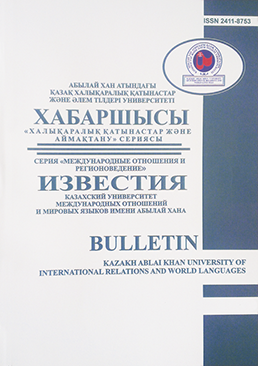РОЛЬ РАЗВИВАЮЩИХСЯ СТРАН В НОВОМ РЕГИОНАЛИЗМЕ: СРАВНИТЕЛЬНЫЙ АНАЛИЗ МОДЕЛЕЙ УЧАСТИЯ
DOI:
https://doi.org/10.48371/ISMO.2025.61.3.018Ключевые слова:
новый регионализм, развивающиеся страны, интеграция, региональные организации, сравнительный анализ, международные отношенияАннотация
Данная статья посвящена анализу участия развивающихся стран в процессах нового регионализма. Основной целью исследования является сравнительное изучение моделей региональной интеграции, сложившихся в различных частях мира: в Латинской Америке, Юго-Восточной Азии, на африканском континенте и в евразийском пространстве. Особое внимание уделяется историческим предпосылкам формирования этих моделей, их институциональным характеристикам, степени вовлечённости в глобальные процессы, а также устойчивости к внешнему влиянию. В качестве методологической основы использован сравнительный анализ, а также элементы системного и структурно-функционального подходов, что позволило охватить широкий спектр политико-экономических параметров интеграции.
В ходе исследования выявлены существенные различия между моделями, к примеру, интеграционные объединения Латинской Америки, такие как MERCOSUR, делают ставку на политическую координацию и стратегическое ослабление зависимости от внешних центров силы. АСЕАН (Ассоциация государств Юго-Восточной Азии) характеризуется гибкой структурой и минимальной институционализацией при сохранении экономического взаимодействия. Региональные инициативы в Африке (например, Сообщество развития юга Африки - САДК) демонстрируют высокую роль негосударственных акторов и неформальных сетей в условиях слабых государственных институтов. Евразийские проекты (Евразийский экономический союз - ЕАЭС) отличаются более выраженным геополитическим измерением и институциональной асимметрией между участниками.
Статья подчёркивает, что новый регионализм в развивающихся странах становится не только инструментом экономической интеграции, но и важным средством укрепления политического суверенитета, внутренней стабильности и региональной солидарности. Представленные выводы обобщены в аналитической таблице, содержащей ключевые параметры и особенности каждой модели. Результаты сравнительного анализа позволяют выделить ключевые факторы, определяющие устойчивость и эффективность нового регионализма в развивающихся странах: наличие институциональной гибкости, адаптация к локальным реалиям, политическая воля к интеграции, участие негосударственных акторов и способность вырабатывать общие цели.







